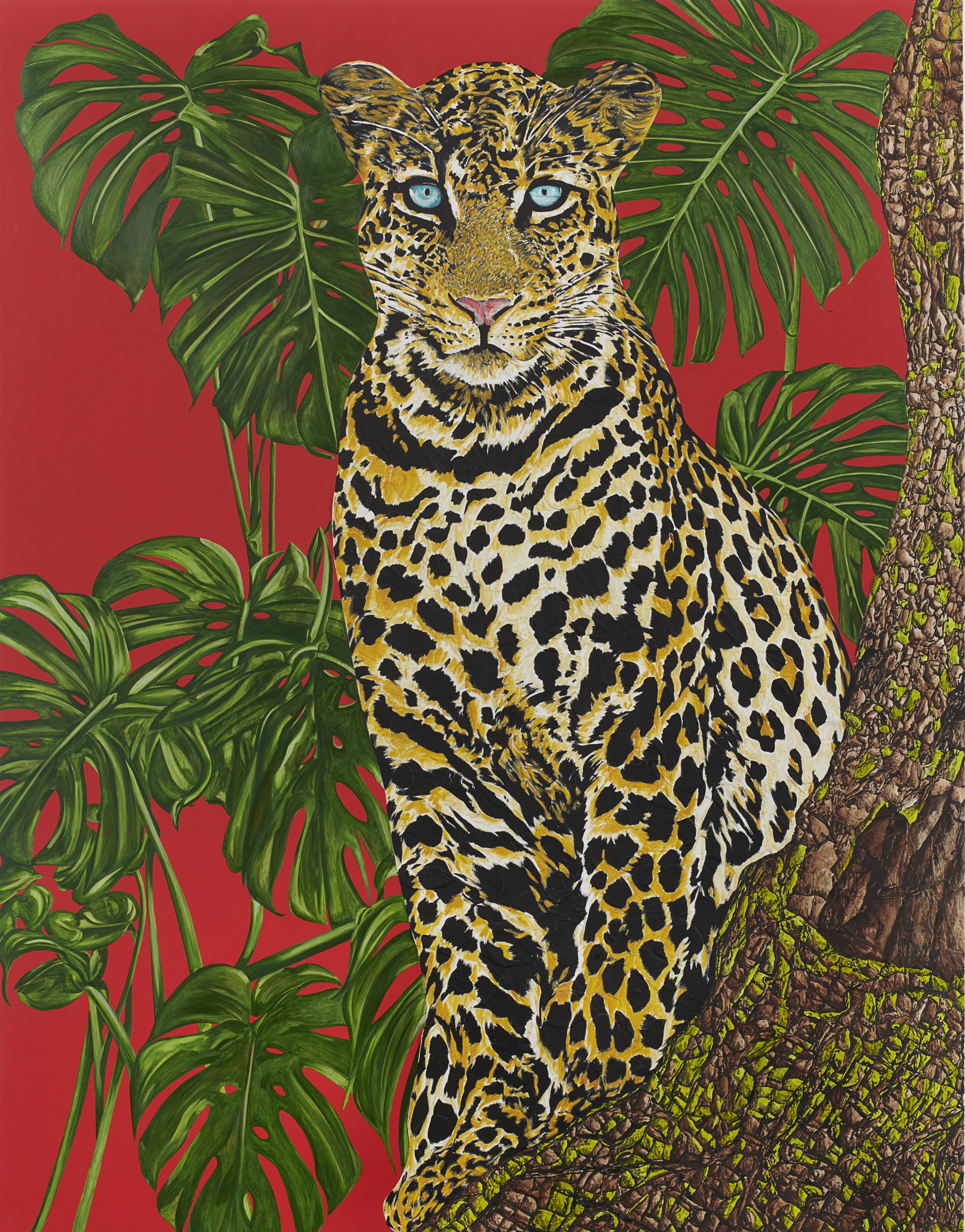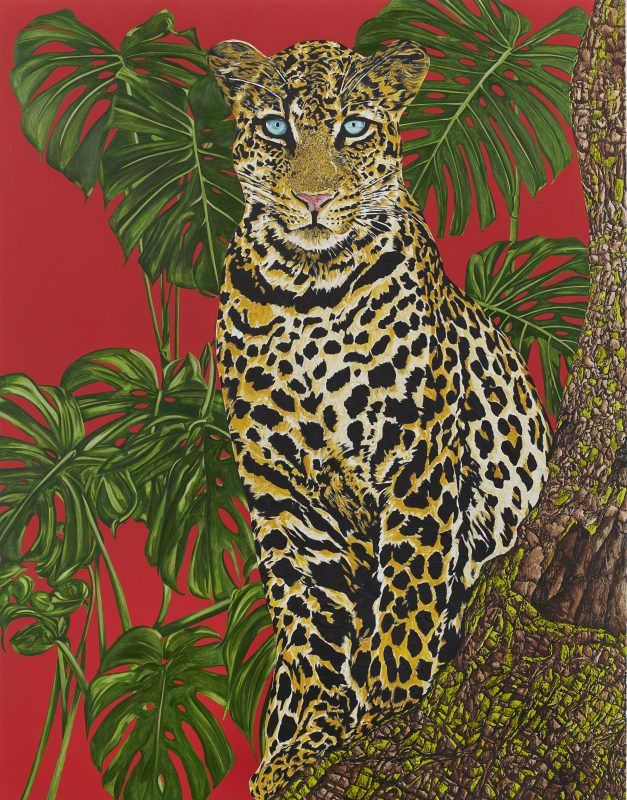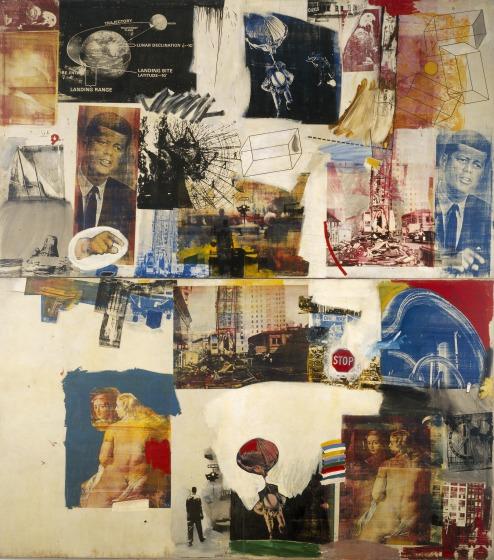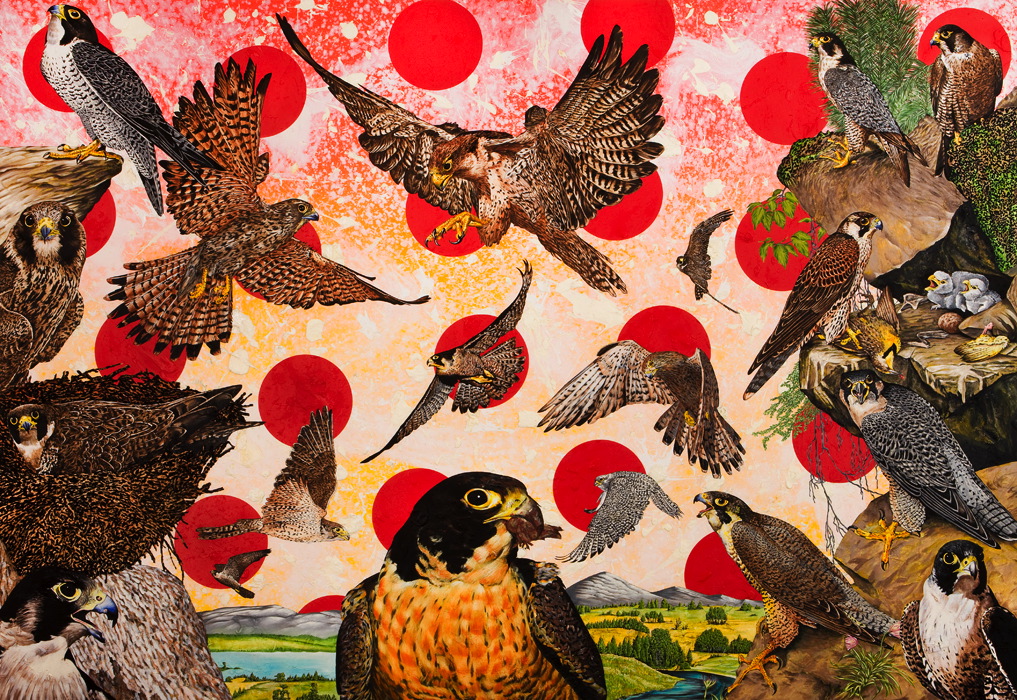Nature’s Course: An Interview with John Newsom (Part 5)
John Newsom, Dense Armor, 2008-09. Credit: Oklahoma Contemporary Museum
Combining realistic representations of animals and vegetation, Abstract Expressionism, and hard-edge geometry, John Newsom’s paintings explore our intricate and complicated relationship with nature. I spoke with John about his origins, his practice, and his upcoming exhibitions – a mid-career retrospective at the Oklahoma Contemporary Museum and a two-person show with Raymond Pettibon in Palm Beach.
Continued from Part 4
Nathalie Martin: So I was talking to my friend, a young painter who’s in the studio all day and has an incredible work ethic. But he’s always so hung up about originality or making the most original thing. And I always tell him that maybe originality isn’t the goal. Maybe you’re working towards a certain goal or idea and then your voice or that originality just comes, almost like a symptom or byproduct of whatever you’re working towards. Just not being so fixated with making the most “original” thing. You mentioned Morandi – people have painted cups before. But he makes it totally his own.
John Newsom: Well I would say your friend is looking outside of themselves. What they have to do is turn that vision inward and it’ll be new. It’ll be new because they’ll be discovering themselves for the first time. Everybody, honestly, has a unique spark within them. This is what I’m saying, Nathalie. You got to bring it all in, in, in, but then you’ve got to let it go, go, go. You have to get rid of it all. That’s why you have to learn everything to unlearn everything. If that makes sense. I really mean that. You have to go out there and just learn and take in as much as possible, and then edit it down to get rid of it all. Then you’re going to be at a place that is totally new. You’re going to have an option if you’re a painter in the painting context, because your friend may discover that they can do what they need to do, but they have to do it training dolphins or something. But anyway, I do think that is something that particularly young artists struggle with. I think it’s a healthy thing. You have to be diligent about it. The cream always rises to the top, it always does. So then you go with that, whatever that is, whatever that means. I actually just finished a nine by eighteen-foot canvas that’s going to debut in the museum show in March.
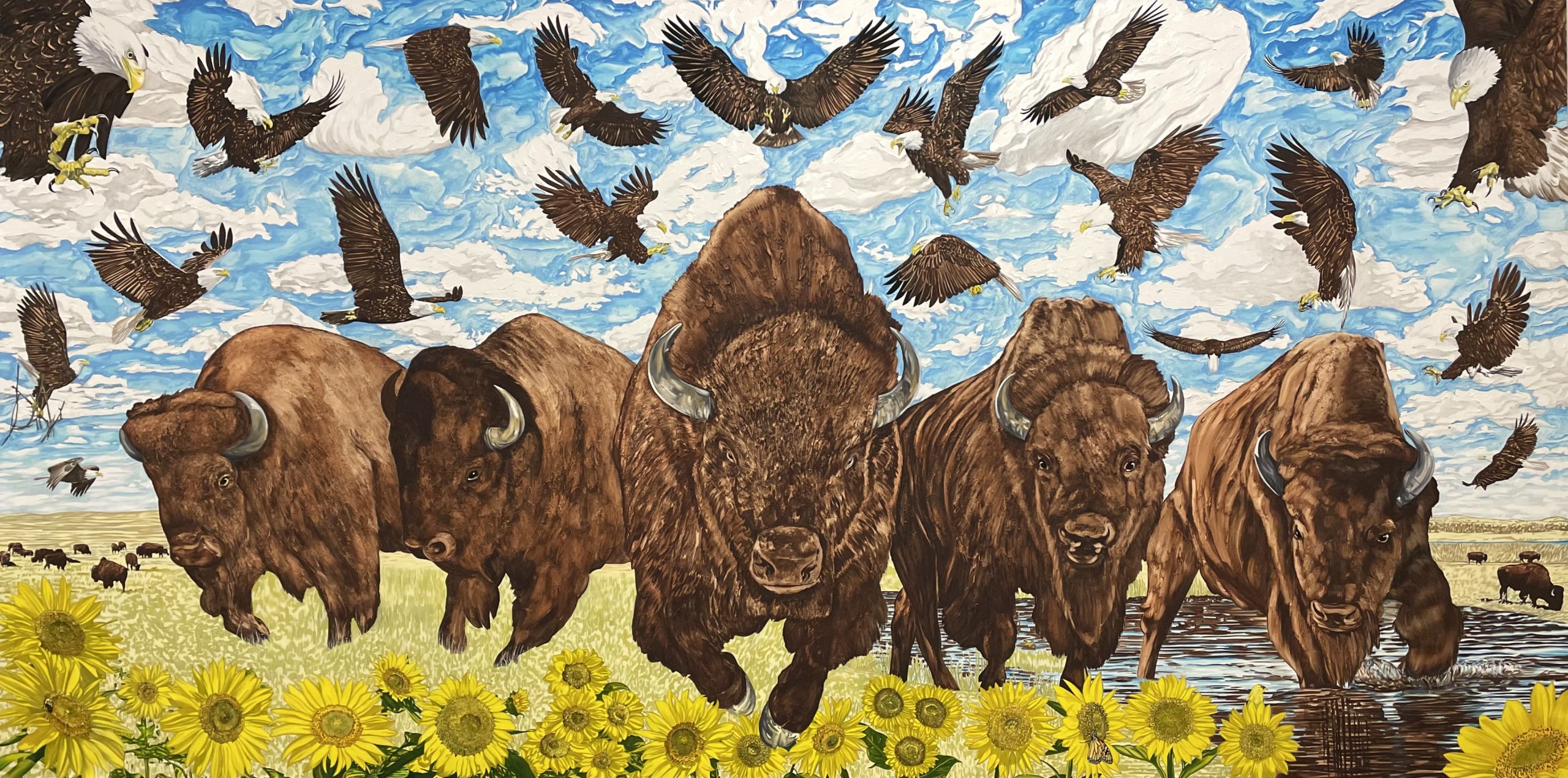
John Newsom, Nature’s Course, 2021-22. Credit: Oklahoma Contemporary Museum
NM: Your retrospective? Tell me about that.
JN: Yeah, I have a mid-career retrospective, and I’ve been struggling with even saying that phrase because it’s so freaky to say out loud. But I do have a mid-career retrospective opening on March 24th at the new Oklahoma Contemporary Museum, which obviously is very meaningful because that’s the region I’m from, but it also happens to be an extraordinary building and staff. The programming is exceptional. Ed Ruscha just had a full-scale retrospective at the museum, and I’m very honored to be following him. The programming that’s coming up is very, very dynamic and international. This exhibition has been a few years in the planning. We started it
before the pandemic. Fortunately, my dates landed a little bit afterwards. It’s going to be comprised of 31 large-scale paintings from the past 20 years. The majority of works are coming in from private collections all over the United States. We decided to keep the show within national borders at the time because of COVID restrictions and shipping. There were some works abroad I would ideally liked to have brought in, but it’s okay. We were able to get the show to a hundred percent with what we have and it’s going to be outstanding. I’m excited about it. They chose the paintings and I felt like I needed to make one to debut at the show.
I jumped into this painting. I was sitting with a friend of mine, watching a horse race on television. I was talking with my friend about the race because he’s into it, I’m not into it, but it just happened to be on the screen. He said that it was the races at Longchamp. I was like, oh yeah, like the Manet painting, because that was the first time a painter had painted a painting like that, from the perspective of seeing the racers and the horses directly coming right at you. Until then the scene was always presented from the side. So that sparked an idea in my mind. Now I’ve got the title. The title of the exhibition at the museum is Nature’s Course, which I feel I just
walked the entirety of in the last hour talking to you, which is amazing. It’s a herd of five charging bison with a flock of eagles soaring above this open sky. It’s the great Mid-western Plains.
NM: I was just going to say, there’s the Kansas and Oklahoma coming back right back in.
JN: Yeah, exactly. But Nathalie, there’s no way I would have thought I would be painting this painting five years ago, ten years ago, twenty, thirty years ago. How insane? But it might be my strongest painting to date. We’ll see. I mean, a few people that have seen previews of it, I’ve been really pleased with the reaction. So I’m very excited about this. It’s going to open on March 24th and run through August 15th.
NM: So the show is called Nature’s Course. Obviously, your work deals with our complex relationship with nature. And I think you have this visual language or this mark-making style that kind of exists between abstraction and figuration, or soft and fierce, or the beautiful and the terrifying or menacing. Are these binaries representations of how you view this relationship?
JN: Yeah, there’s definitely a duality in the work. But I just feel like it needs to be there because it’s got to be there. The language is such that it incorporates a wide variety of applique and thought, but there are parameters on that. Meaning there are specifications to it. You know, there are rules, for lack of a better word. That’s not to say that you can’t break the rules. It’s just to acknowledge that there are rules and those are for the most part of my own making at this point,
because it goes back to early on. You try to learn and get on something more organic, you just got to figure out what’s working and what’s not working. Where the energy is right. You go in the direction of the good energy. Even if it’s a painting that is made during a challenging period of one’s life. The tableau of the canvas can absorb the hit of any energy that you bring to it. That’s the magic of it. It’s just kind of a tremendous thing. And then it exists in the painting, it
becomes manifested. So whatever it is, if it’s a Goya painting of a certain theme, you can see
where his energy was. It’s now transferred into the canvas – it’s in the picture. When I say you get good energy, I mean that you worked through whatever energy it is and then you hopefully will feel better. This is about healing. I think ultimately great painting is about healing. Whether it’s yourself or the viewer – and it’s really important to note that a painting doesn’t exist unless it’s got eyes in front of it.

John Newsom, Harvest, 2011-16. Credit: Oklahoma Contemporary Museum
NM: I always say this!
JN: This is really interesting because I don’t paint the human figure, I paint an allegorical representation of the human figure. The physical reality of a human figure doesn’t appear in my work. It appears through the observer of the work. I’m very conscious of that. The viewer completes the picture. Because if they’re not there, the painting doesn’t exist. It’s like if the tree falls in the forest, does it make a sound? It’s a little existential, but it makes sense. So when people say, “Oh, why don’t you paint the figure?” I’m like, “You’re the figure, you’re right there!”
But to get back to the questions, I paint in allegorical terms. There are kind of two ways to read one of my paintings. One is in the literal sense, of whatever flora and fauna or expression of manner you may find within the painting, and then the other is what’s its meaning, what’s its allegory, what’s its allusion. What is it alluding to? Then that gets interesting. It gets complex. Sometimes I make that definition a little bit more reachable, but sometimes I put it out of reach because I want to give people a mystery. That’s something that I think is really important and I think is missing in a lot of today’s art. Everybody is so engaged in meaning, or getting this or that point across. It’s like, I don’t need to know! And so what I want to do is give you both. You can get this or that, or you can leave it there. It doesn’t matter. You know what I mean?
So Nature’s Course is the idea that it’s going to be what it’s going to be. And that’s what it is. You take your time with the paintings because you have to sit with paintings. People are scrolling through Instagram and their attention spans are like goldfish, just like boom, boom,
gone. Painting is the opposite of Instagram. You have to sit with a painting and you have to read it like a book, but it’s visual, you know.
NM: I think learning how to see a painting is really like learning how to read again.
JN: You just said it, learning how to see again. It’s just a different process. Myself and others have had the potential to fall in love with that process, you know, and I’m certainly in love with that process.
NM: So you have a two-person exhibition with Raymond Pettibon coming up as well, opening March 15th at County Gallery in Palm Beach. How does that differ from the retrospective or the idea of Nature’s Course? Does it differ?
JN: I’m very excited about that. Yeah, well, the title of, and the theme of that exhibition, is the five classical elements: fire, air, water, earth, and aether. So Raymond and I each made five new works for the show. There will be 10 pieces in all – my five versions of the classical elements and Raymond’s five versions of the classical elements. I’m really excited about it because just thematically speaking, it’s such a tried and true iconography of art. It goes back to the beginning of it all and everything in between. It was a fascinating project to work on. Having it open simultaneously with the museum show is just perfect. Raymond and I formed a friendship over the bond between our two sons. Our sons are good friends, so it was through them that we started our friendship and discussions and I really just admire Raymond. But you know what? It was through nature’s course itself – through the boys playing around, swimming, making little films, and going on excursions like Huckleberry Finn and Tom Sawyer. Those two are just like dynamite. It’s just great.

John Newsom in his studio, 2022.
Photo Credit: Jonathan Mannion
COUNTY is a young gallery, a very good gallery in Palm Beach. They approached me and Raymond with the idea of doing the show and we had some really healthy discussions, landed on this and I couldn’t be more pleased with how the process has unfolded and the staff at COUNTY. I’m really looking forward to both exhibitions.
NM: That’s incredible, it sounds seamless. So what keeps you painting? What inspires you?
Is it your family? Is it this internal drive? Is it outside influences?
JN: Well, it’s all of the above and more, you know, at this point – you know what, it goes back to the beginning, it’s just the same, Nathalie. It’s just that life itself brings to it what it needs to be. You know, whether it’s something I feel, observe, or experience, I put it into the paintings. And this goes back again to the idea of generosity. I want to serve up a very full meal. I want to make it a big plentiful meal, and I’m just always cooking.
NM: Always in the kitchen.
JN: I’m always in the kitchen, yes, I’m always in the kitchen. You find me in the studio or with my kids, that’s it. That’s my world.
NM: And they’re the same, probably, as far as the return you’re getting.
JN: Yeah, but you know what, that brings us back to the very beginning of our conversation, even before we hopped on the recording. I used to be incredibly social when I was younger. I was out at a thousand openings. I never slept, I was working, I was going to parties. It was exhausting. Just exhausting. It was amazing. I’m glad I lived through it, to be honest, now I’m eight years sober, I’m a sober guy. And life is golden. I don’t regret anything. But I’m glad I lived through it to get to where I am now because it’s really good right now. It wasn’t always about this balance. It was like being tied to the mast heading out to rough seas, but I learned a lot and I have a lot to be thankful for.
NM: I think that directly relates to how you work and your practice. You’re gonna go where you go or shit’s going to come from you and happen to you, but you just got to work through it. You constantly have to work through it, whether it’s painting or life –
JN: Thus, nature’s course.
NM: Nature’s course. Exactly.
Nature’s Course: An Interview with John Newsom (Part 5) Read More »
Artist Profile, Exhibition

